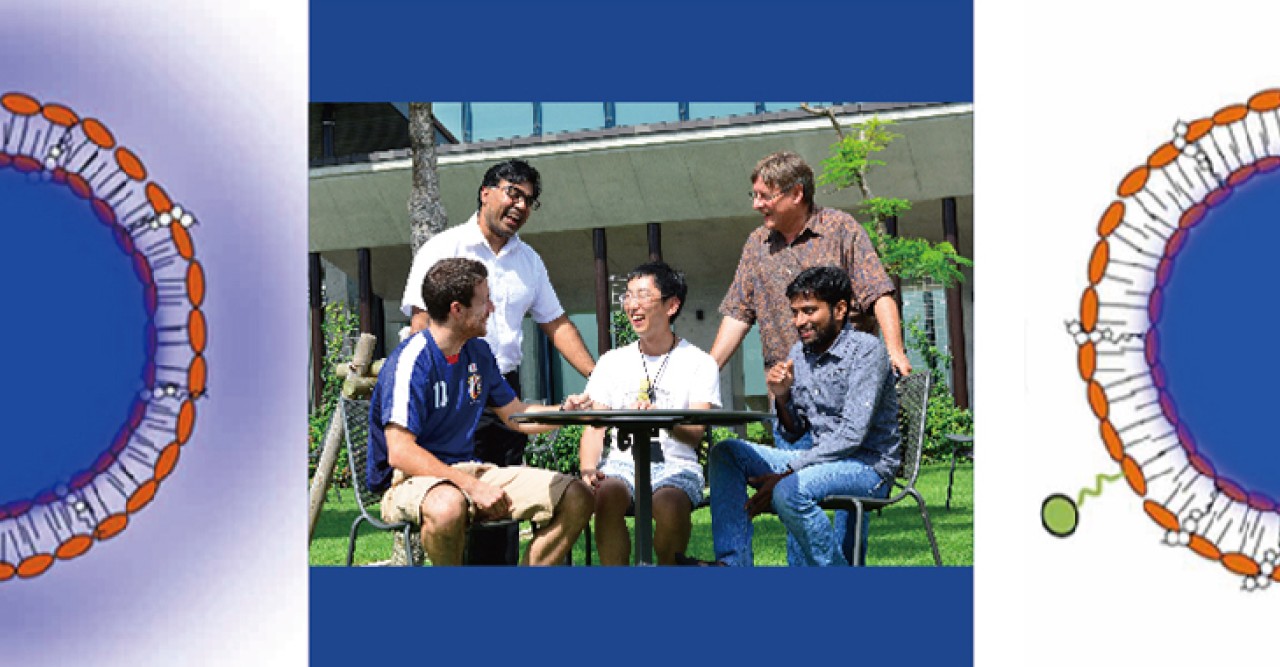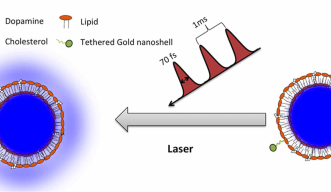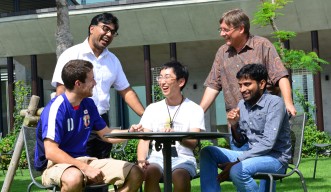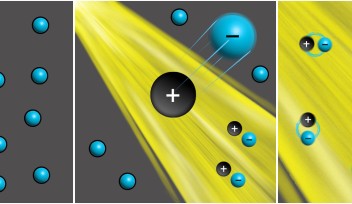Using Femtosecond Lasers to Administer Drugs

Combining physics and neurobiology to tackle Parkinson’s Disease is research “I would never have been able to do outside of OIST,” says Professor Keshav Dani. The Okinawa Institute of Science and Technology Graduate University’s Femtosecond Spectroscopy Unit and Neurobiology Research Unit, along with collaborators at the University of Otago, New Zealand are using lasers, nanotechnology and neuroscience to develop a new, versatile drug delivery system. In a new article in Scientific Reports, the researchers describe their work using a laser to release a neurochemical, the function of which is impaired in Parkinson’s Disease, in a controlled and repeatable manner.
An exciting new area of research for a cure or therapy for many diseases is targeted drug delivery. Currently, we administer drugs in a systemic way and tissues or organs that do not need the drug receive it, leading to unwanted side effects. A good example of this is in chemotherapy, which is toxic not only to the intended target cancer cells, but also to healthy tissue. Recent advances in nanotechnology and biology are opening up the possibilities in targeted drug delivery, where researchers can release drugs or compounds in a specific tissue or even individual cells, which would allow the drug to reach only its intended target. In their recent paper, OIST researchers describe a method to encapsulate a drug in a shell of lipids, or fat, called a liposome, and modulate the release of the drug using a pulse from a laser.
Members of the Neurobiology Research Unit approached the Femtosecond Spectroscopy Unit with the idea to apply laser technology in a possible therapy for Parkinson’s Disease. In Parkinson’s Disease, the neurochemical dopamine does not function properly. The researchers wanted to use the precise timing and intensity of femtosecond lasers to control the release of dopamine in a way that mimicked its natural dynamic mechanism. Therefore, the researchers encapsulated dopamine in a liposome tethered to a gold nanoparticle. They used a femtosecond laser pulse as the energy source. The energy is absorbed by the gold nanoparticle and then transferred to the liposome, causing the liposome to open and release the dopamine. The length of time and therefore amount of dopamine released can be precisely controlled by the intensity and length of time the laser is on. The researchers also showed that the liposomes are not destroyed by the laser as in previous similar studies. Therefore, the release of dopamine, or any chemical contained within the liposome, can be repeated and controlled. Takashi Nakano of the OIST Neurobiology Research Unit said, “with this method, we can administer a wide range of drugs with precise timing and duration using laser pulses with sub-second accuracy. We are very excited about the potential this new tool brings to neurobiological research."
The next step is using these laser-activated liposomes in living tissue, and eventually, in a live animal. The ability to release potentially any type of drug, chemical or naturally occurring compound in the right place at the right time with a controlled dosage will open new possibilities in medicine. For Dani, it is exciting for him to “be able to utilize a physics technique I learned in graduate school for applications in neuroscience.” Nakano added, “the close collaboration between physicists, chemists, and neuroscientists made this outcome possible. OIST’s interdisciplinary research has truly facilitated smooth understanding of fields outside the collaborators’ individual expertise.” The future of new technologies and cures for disease may lie at the boundary between different scientific fields, such as physics and neuroscience. OIST researchers are addressing today’s scientific and medical puzzles, like Parkinson’s Disease, by developing tomorrow’s technologies that straddle those scientific boundaries. Maybe Parkinson’s Disease will be cured by a curious neuroscientist who works across the hall from a willing physicist in Okinawa.
By: Kathleen Estes
Research Units
For press enquiries:
Press Inquiry Form
















